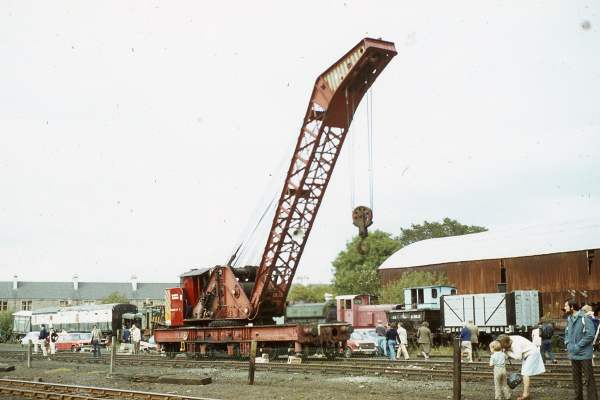


Locomotive and rolling stock weights increased rapidly in the early 20th century, as railways improved in passenger comfort and in speed. Breakdown (or "accident") crane capacities had to increase to keep up. The largest capacity breakdown cranes in Scotland before this one were of 20 ton capacity, and at 36 ton capacity this crane remained the largest in Scotland until 1930.
The "Breakdown Train" was an essential part of the railway infrastructure, and could be used to sort out the aftermath of derailments or to help the Civil Engineers with major jobs such as bridge replacements. Although rare, accidents could see the crane working at its limit, and the design had to anticipate a degree of overloading in difficult circumstances. In addition, like any crane, its stability is only as good as the underlying ground conditions, and so a great deal depended on the skill of the craneman.
Crane No.971 was built to the order of the North British Railway in 1914 by Cowans, Sheldon of Carlisle, specialist manufacturers of railway cranes. It was supplied new to St Margaret's Depot in Edinburgh, a central location on the NBR system. It was eventually superceded there by a 50 ton crane, and moved to Thornton in Fife in 1962, and was finally based at Dundee West from 1967 to 1979. This was the largest crane available from its builders at the time of ordering, and it had to be specially made to suit the restricted NBR system loading gauge.
The crane's weight is carried on a 4-wheel bogie at either end and on 2 driving axles in the middle of the carriage. It can work "free on rails", but can only achieve its full rating when stationary with its outrigger beams deployed and packed up. These beams are fitted between the driving axles and the bogies. However, much of the NBR system was single track, and so the crane had to be able to work with the jib lifting over the end. In this condition, since the outriggers are not at the end of the carriage, load would be transferred to the bogies, and to avoid this dolly jacks are provided at each outboard corner.
J.S. Brownlie, Railway Steam Cranes; a survey of progress since 1875, Glasgow 1973.